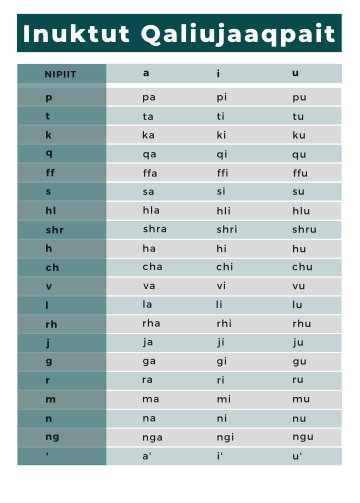
The national Inuit organization of Canada has decided on a new standard of writing for a unified Inkutut writing system. The system is called Inuktut Qaliujaaqpait and uses Roman orthography (the alphabet used in English) rather than syllabics. Syllabics look like rows of circles, squares and triangles. The written language will be able to be understood across Canada, and will replace a patchwork of nine different scripts. While Inukut speakers could often understand different dialects, they couldn’t necessarily read the different types of writing. The new unified writing system is intended to be easy to learn, use, and understand. Inuit Tapiriit Kanatami (ITK) says that Inuktut Qaliujaaqpait is designed to write the Inuit language, in all its dialects, across all regions of Inuit Nunangat.
“It is a critical step in Inuit self-determination and taking ownership of our written language,” ITK President Natan Obed said in a news release.
“Our current writing systems were introduced through the process of colonization. The unified Inuktut writing system will be a writing system created by Inuit for Inuit in Canada.”
“This is why it includes sounds from every dialect—including sounds that only occur in a few dialects—so that speakers of every dialect can write their own dialect using Inuktut Qaliujaaqpait according to the words and pronunciation they normally use. ”
While the new, unified writing system does not use syllabics, ITK notes that the system does not aim to replace previous systems of syllabics, only to make it easier to read different dialects and share materials over time, leading to a greater consistency in Inuktut language education.
“It is important to note that Inuktut Qaliujaaqpait does not replace syllabics—regions can and will continue use of syllabics and other distinct writing systems. There is no expectation that people who already use older writing systems will have to change the way they write,” ITK said.







